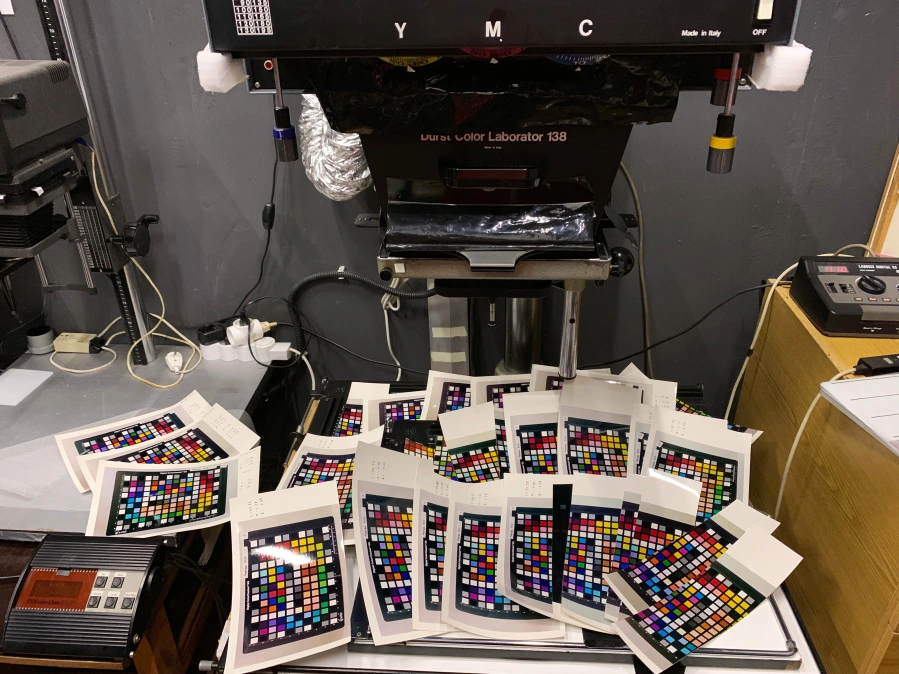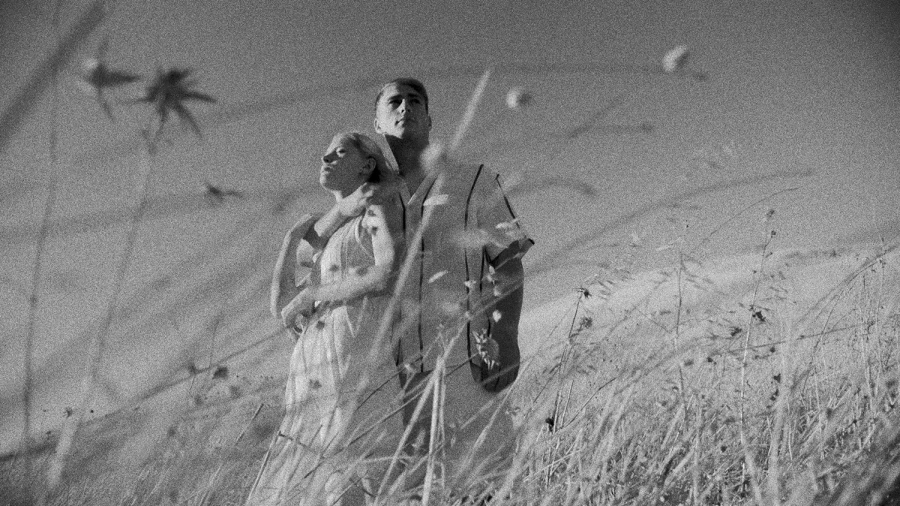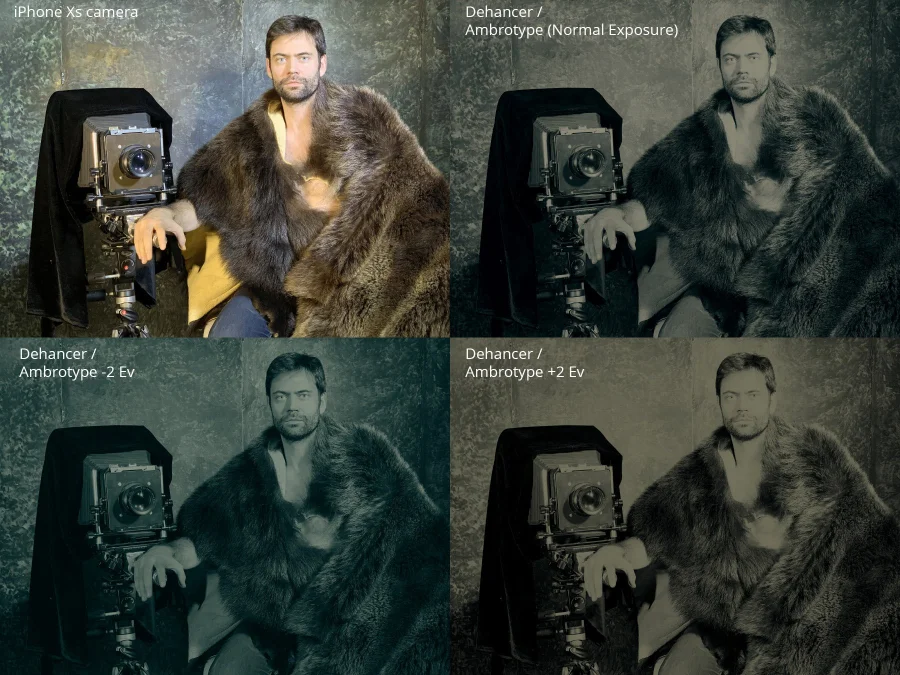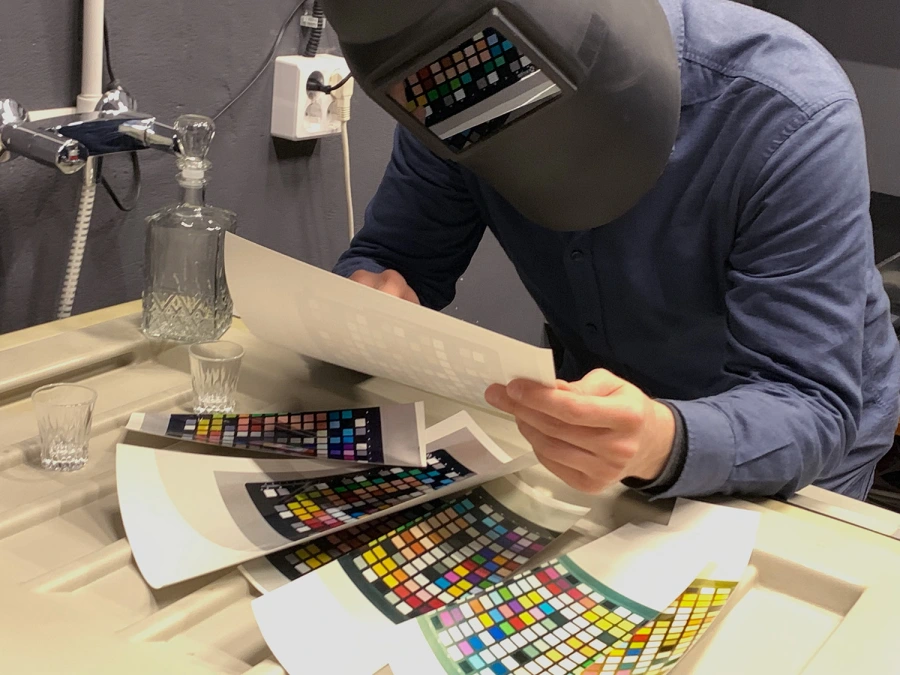
Polaroid Type 100 Sepia (Exp. 2009) Paul Giambarda Edition
New multi-LUT film profile in Dehancer App. This realistic film simulation works with any photo as a correction filter (preset) applied in one click and can be modified by user.


Polaroid Type 100 Sepia (Exp. 2009) Paul Giambarda Edition
New multi-LUT film profile in Dehancer App. This realistic film simulation works with any photo as a correction filter (preset) applied in one click and can be modified by user.


Fujifilm FP-100c
50th anniversary multi-LUT film profile in Dehancer App. This realistic film simulation works with any photo as a correction filter (preset) applied in one click and can be modified by user.

© Photo by Pavel Kosenko

Estimation of negative density is an important part of profile building process. Unknown and expired film stock is always tricky to expose well. So we’re usually shooting this kind of film at a wide range of shutter-speeds and choose three frames afterwards for multi-LUT film profile building, having a perfect negative strip at hand.

It took 26 color proofs and 5 hours spent in our color darkroom to print 3 targets for “Kodak Portra 800” multi-LUT profile. This is due to our high demands for colorimetric accuracy of film characterization.


It takes about 4 hours of analogue and 5 minut of digital works to create a profile for each film.

Short video from our black and white darkroom:

On the right you can see three printed targets — underexposed, normal and overexposed Kodak Portra 160VC film. They are printed manually directly from negatives in the darkroom using optical enlarger with color head and wet processing RA4.
On the left you can see 14 (in this case) test prints – made to achieve needed white balance and exposure. Each sample is developed, bleached, washed and dried for total of 4:20 min in RA4 paper processor.
Afterwards each print is measured with a spectrophotometer. Depending on results we add color head and exposure time corrections for the next sample.
Final prints have been scanned in a special way. With these prints we built a new mLUT film profile for Dehancer using our non-linear mathematic methods.


A couple pictures taken during ambrotype profile creation process. Emulsion watering, shooting and the developing by Anatole Green.

We’ve took 3 negative pictures on glass plates — normal, under and over exposure. After that have scanned them on velvet background as positive and made mLUT (multi-LUT) profile using our non-linear mathematics. How it works in Dehancer you can see on example below.

Those hues are natural as it is, without desaturation or colorize post-processing. In reality, the underexposed ambrotype also looks like a bronze-green, and the overexposure is more yellow.

Some of color patches on the targets are so rich we need eye protection not to loose sight during mLUT profiles building. And of course we have to drink russian vodka constantly becouse conditions of our work are unhealthy.

Important step — final ironing of target prints before scaning. Not less important to use analogue iron heated on coals for best result of non-linear matrix transform.

One of the step of multi-LUT film profile building — competent scanning of analogue photographic prints from original negatives for further its interpretation in our own special engineering application Dehancer mLUT Maker wich using non-linear know-hows.